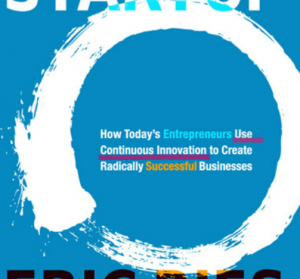Blog
Start-Ups Fail. But Not Why You Think.
The second in a 2-part post.
In the first post I opened with a published list distilled from 101 start-up postmortems of start-up failures that identified the most common “causes”. The gist of that post was my own list of five common mistakes many start-ups make. Mistakes readers can avoid once being aware of them.
For this post I explain why the listed mistakes of the first post creep up on unsuspecting companies. Tell me if this sounds familiar to you: despite seemingly “proactive” monitoring by company executives and investors, the mistakes tend to go unnoticed until too late to prevent drastic measures (which are not always enough to save the company). And thus the search for an eleventh hour miracle begins. We want to avoid that search.
In the prior post I noted that one problem with the original list of causes or reasons is that most of the strategies for avoiding failure related to these causes are nothing more than some variation on the theme of, “pay closer attention.” But paying closer attention is not actually doing anything differently that would prevent the failure.
 There’s nothing inherently wrong with the original list. The items on the list are not controversial. That list indeed includes ways in which start-ups fail. In fact, these failure modes are fairly well spot-on.
There’s nothing inherently wrong with the original list. The items on the list are not controversial. That list indeed includes ways in which start-ups fail. In fact, these failure modes are fairly well spot-on.
Except that they’re wrong.
The items on the list aren’t wrong, per se, it’s that the description of what the list is that’s wrong. The list doesn’t have any reasons on it at all. They’re symptoms.
This is important. I’m not just splitting hairs. If people only look at these symptoms as though they’re causes they’ll only get more of “paying closer attention”. Quantum physics aside, more scrutiny doesn’t necessarily yield better results. Running out of money isn’t a cause, it’s a symptom of something else that “caused” the company to run out of money. Blaming a person for bleeding after a paper cut is looking at the wrong end of the events. The clock running out in the game is not why there weren’t enough points on the board. You’ve got the idea.
We tell our kids to “be careful” when they go out and play. Does a 6-year-old they really know what to do to “be careful”? “Don’t play on the ice” or “don’t run in the street” is far more actionable. How can companies conduct business differently to avoid the reasons? “Don’t fail” isn’t enough. I’ve appended actual reasons to failure symptoms:
- Failure to get an MVP is actually Failing to have a process to inform you of where your are relative to your MVP.
- Running out of money or time is actually Spending it on the wrong things.
- Not getting to Beta is actually Overloading work and not having a workflow process to prioritize and coordinate all the work and get it all done.
- Having the wrong people is actually Knowing what needs to be done and whether the right people are doing it.
- Too little revenue or lack of traction is actually Ineffective feedback from the market.
Compared to knowing what product ought to be built, building products is easy. It’s easier to track cash flow than to determine what to spend money on. An endemic failure to effectively prioritize doesn’t just show up in one place.
The belief that there’s always time to do it again (or to work late into the night) rather than to take the time to plan on how to do it correctly the first time shows a lack of a the company’s self-awareness about their capabilities. Dig a little into a company about it’s self-awareness on capabilities and you’ll likely learn that they don’t see themselves as a system with many connections and dependencies.
Companies don’t just fail to gain traction. (Assuming they have a viable product) the failure is in how they (didn’t) organize, validate, and operate an effective system to gain traction.
 By now you’re familiar with the concept and the book, The Lean Start-Up. Eric Ries actually gives away the “secret sauce” right on the cover of the book. (See underlined words in book image.) The challenge is that “use continuous innovation” is the system and it’s not a trivial thing to set up! That system includes several elements including data gathering, decision-making, experimentation, learning and so on.
By now you’re familiar with the concept and the book, The Lean Start-Up. Eric Ries actually gives away the “secret sauce” right on the cover of the book. (See underlined words in book image.) The challenge is that “use continuous innovation” is the system and it’s not a trivial thing to set up! That system includes several elements including data gathering, decision-making, experimentation, learning and so on.
A poorly kept secret in the investor world is that investors don’t invest in products, they invest in people. These days investors are more likely to give money to a spunky, scrappy, relentless founder of a company without a working product than they are to a fund a founder with a product who even hints at equivocation. If investors like a product but don’t like who’s running the company, they’ll find a way to get the product and dump the baggage. They will not move forward with a founder who lacks the backbone to lead just because that person came up with the idea. It’s a scrappy founder who is more likely to recognize (and do it sooner) when their original idea won’t work and it’s time to change direction. The spunky founder will find the seed within the idea with which they can pursue success. The relentless founder wants to succeed and will do so. The product can’t do any of these things.
The kind of companies investors want to invest in are companies whose founder(s) know what needs to be done and who they need on their team to do it. Investors want to invest in companies with all the assurances of maturity. A money-making system is a much better investment (and sign of maturity) than a shiny product alone. Hawkishly watching financials but not changing the financial drivers isn’t maturity. But a systematic approach to understanding why the financials are what they are? That’s maturity.
Start-Ups fail via any number of symptoms. The cause is nearly always due to (lack of) maturity.
Do you agree? I invite your thoughts.
-
Entinex
A management consulting firm focused on business' performance. The recognized world expert in bringing lean principles into harmony with heavy regulations and governance. Learn More -
Agile CMMI® Blog
The blog that started a revolution. Directly from the world's recognized authority on Agile & CMMI. Learn More
Sorry, the comment form is closed at this time.